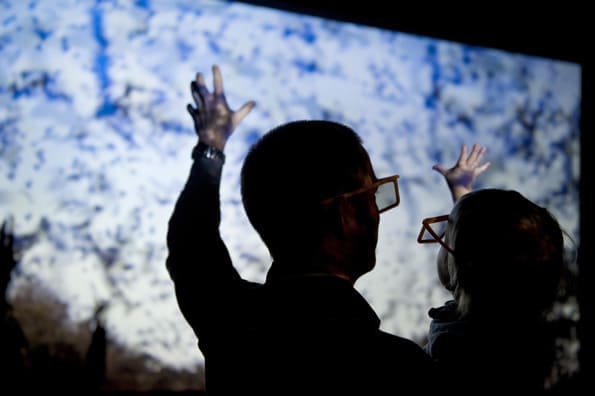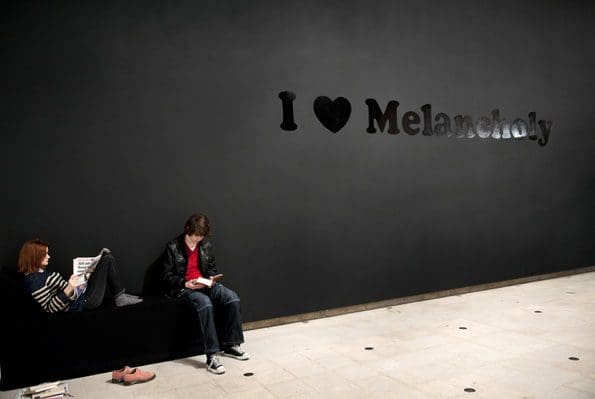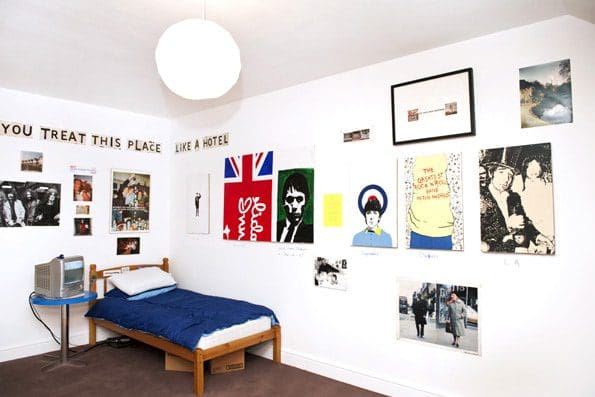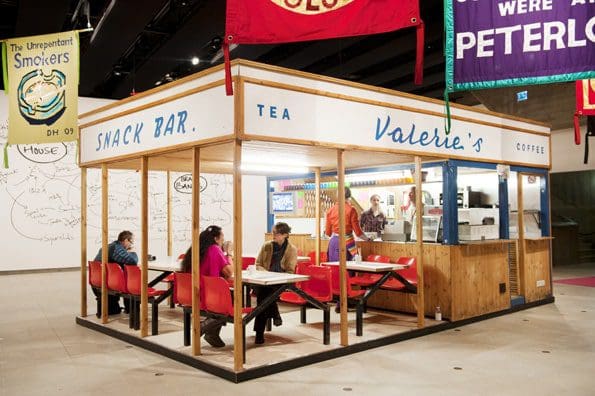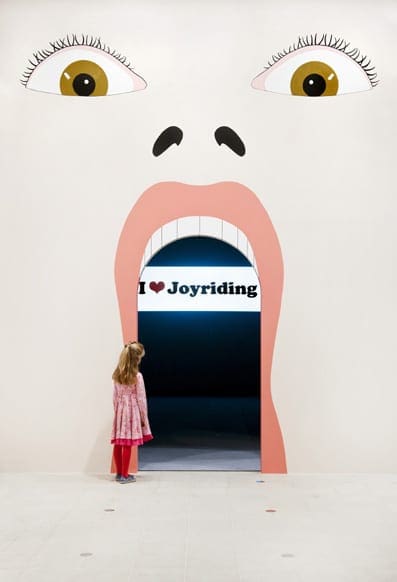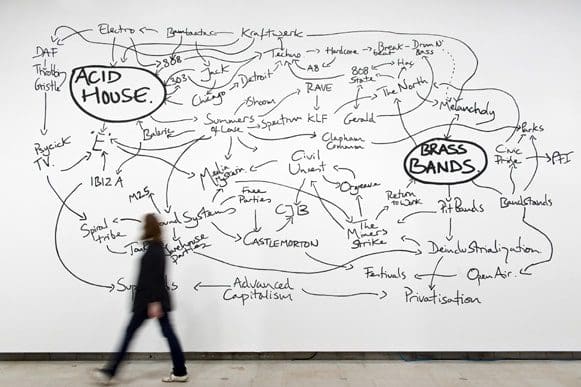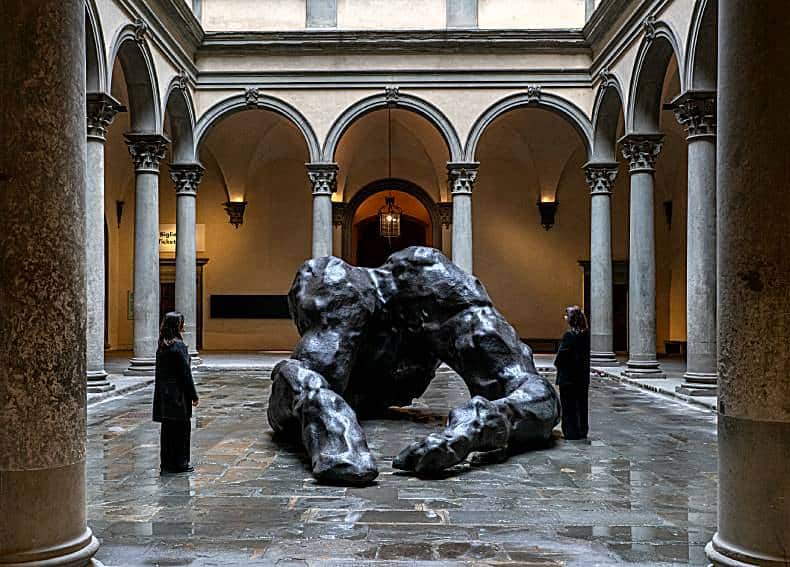Jeremy Deller is an artist. He won the Turner prize, after all. But he is also much, much more than that. The Hayward Gallery’s floors and walls attest to this in a retrospective which begins in a recreation of the artist’s bedroom, and opens out to demonstrate what he sees as the Joy in People.
Just 20 guests made it to Jeremy Deller’s first show in 1993, Open Bedroom. Five years before Tracey Emin’s ubiquitous bed, at the time artists were breaking the ‘fourth wall’ by holding open studios Deller’s Open Bedroom was an exhibition held secretly in his parents’ house, while they were on holiday.
The idea was fanciful and ridiculous, the recreation is more just a relic; there is a wooden single bed with royal-blue sheets and stickers on the frame. Photos, T-shirts and band posters are tacked to the walls with coloured pins, and a small TV plays The Prodigy’s ‘Out of Space’. We are introduced to the pop-culture clash of where Jeremy Deller began. Already we wonder how our teenage bedroom would look to the other visitors. This London art exhibition reaches out to its audience because it is deeply rooted in the politics and society of the last thirty years. What’s special is that Deller takes the role of the ideas man – the director, but the world is his set – his art, and he lets the drama play out.
The Battle of Orgreave was conceived while Deller was still a teenager as he watched a pitched battle in the South Yorkshire town between police and miners. In 2001 Deller staged a re-enactment of the confrontation in Orgreave; the cast including miners and some police who had been there in 1984. The film footage, shot through with a warmth characteristic of Deller, suggests the piece wasn’t just visual – for many it was an emotional experience.
He likes to get people talking. In the next room is Valerie’s Snack Bar. We visitors sit in red plastic chairs to share a cuppa and a chat, and it is social surrealism at its best. The café is a reconstruction of a place of the same name in Bury Market, and was carried in a procession Deller organised with local societies, clubs and characters as in an attempt to celebrate the spirit of Manchester.
Another, more difficult, talking point is It Is What It Is. Centred on the mangled wreckage of a car which was blown up in a Baghdad street, the mixed-media installation includes a space for discussion. Jeremy Deller, a US soldier and an Iraqi citizen travelled across America with what he called “the conversation piece from hell”.
Among many ideas which couldn’t be captured in an exhibition space was his Joyriding project. Joyriding was rife, and there was “moral panic”, so the obvious thing for Deller to do was go around town gluing I ♥ Joyriding stickers onto car bumpers. He even stuck one on a police car. While he condemned the act of joyriding itself, he saw good in the energy and ingenuity that fuelled it. If the exhibition is a celebration of the joy of people, it’s worth taking a minute to celebrate the energy and ingenuity of this most unusual artist.
The London art exhibition ‘Jeremy Deller: Joy in People’ runs until 13 May 2012 at the Hayward Gallery, London www.southbankcentre.co.uk
words Joanna Eckersley


